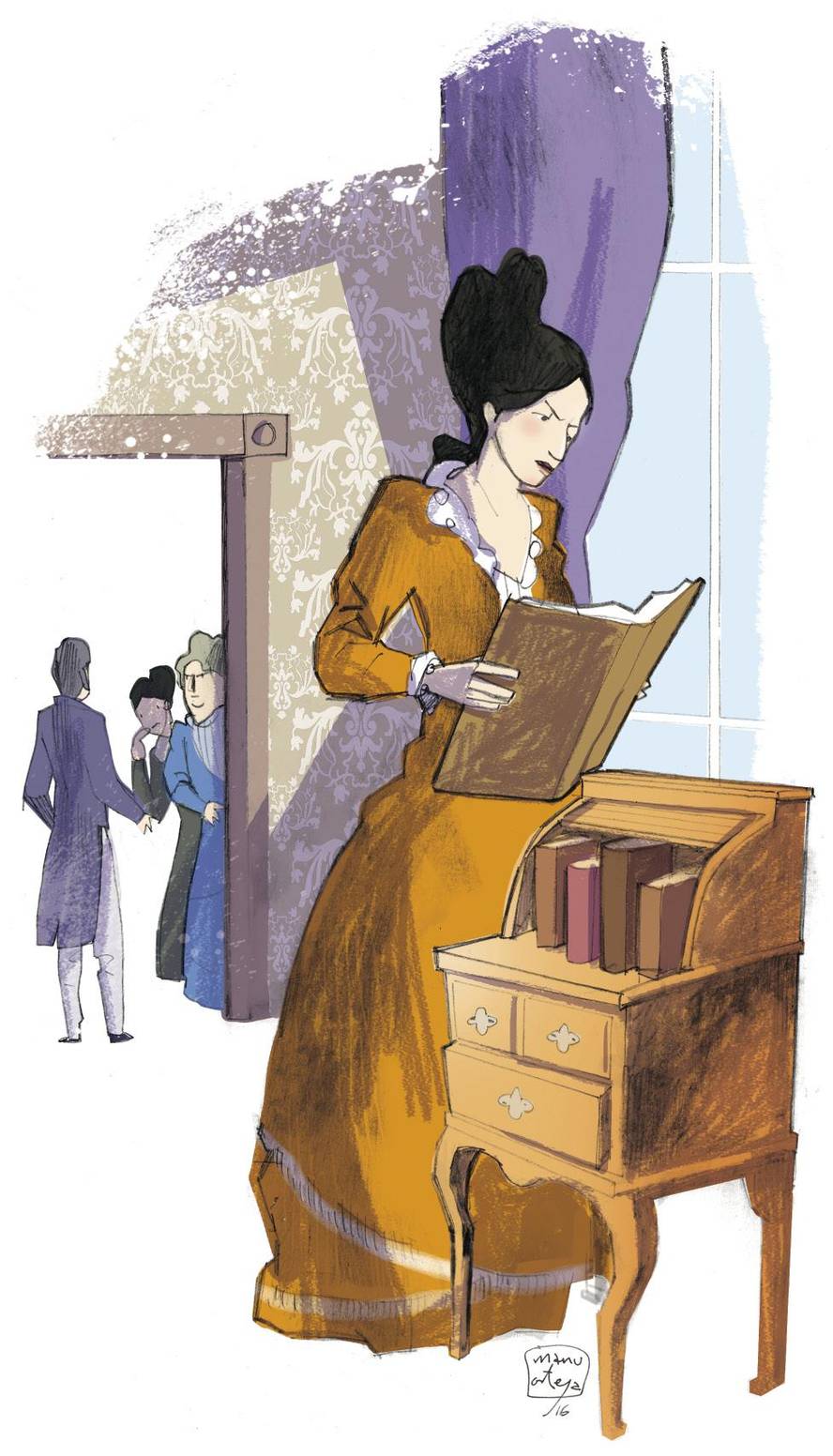Mary Somerville, Lady of Scientific Outreach
His parents did not understand the passion his daughter had acquired for mathematics. And they were worried that spending so many hours studying would not cause health problems. But Mary was stubborn and continued to study on her own until she became one of the greatest experts of the time in mathematics and astronomy.
Mary Fairfax was born in Scotland in 1780. He barely received education. The brothers did have a good education, but the parents did not see the need for their daughters. At the age of ten he was sent to school for a year to learn to read and write. It was not a pleasant experience for Mary. As he would later write, leaving school he felt “like a wild animal escaped from the cage.”
At home he began to read all the books he found. The relatives did not see with good eyes this tendency to books, except Uncle Thomas. Once at home she told her that Mary was trying to learn Latin on her own and her uncle replied that he would help her. Each morning, before breakfast, they began reading together in Latin.
To learn something appropriate for a girl, she was sent to learn how to sew. And then to learn piano and painting. At the age of thirteen he listened to the painting teacher telling another student that Euclide Elements was fundamental to understanding perspective, as well as astronomy and other sciences. Mary was curious. His younger brother's tutor gave him the book and then texts on algebra. While playing the role of a girl of the time, she kept learning in secret.
In 1804, at the age of twenty-four, he married. And her husband didn't help her either. “Although I wasn’t forbidden to study, I didn’t see it with good eyes; I had quite a bad opinion about women’s ability and had no knowledge or interest in scientific issues.” However, this situation did not last long, as her husband died three years later.
By then he had two children, but he realized he had enough time to go back to school. In addition, her husband's inheritance made it easier. For the first time in life he felt totally free to do what he wanted. “I studied flat and spherical trigonometry, conical cuts and Fergusson Astronomy. I also tried to read Newton's Principia. I found it very difficult, and it really didn’t understand me until I read that wonderful work again very often.”
In 1812 he remarried his cousin William Somerville, son of his uncle Thomas. They went to live in London and Mary had the absolute support of her husband to study and investigate. William was a surgeon and was a member of the Royal Society. As women could not access, she manually copied interesting articles for her wife in her library.
They became friends with the most cutting-edge scientists of the time: George Airy, Caroline and William Herschel, John Herschel, George Peacock, Charles Babbage, etc. And in 1817, during a stay in Paris, they also met Laplace, Poisson, Poinsot, etc.
Everyone was fascinated by Mary's knowledge and talent. Laplace said: “Only three women have understood me: you, Mrs. Somerville, Caroline Herschel and Mrs Greig, of whom I know nothing more.” The third was also Somerville, by the surnames of her first husband.
Mary Somerville published her first article in 1826: “The Magnetic Properties of the Violet Rays of the Solar Spectrum”. And then another pair. These works were published by the Royal Society. They were the first signed by a woman who raised powders.
The following year he was asked to translate the work of Laplace Mécanique Céleste into English. The challenge was accepted and published in 1831. Somerville did not make a mere translation, he interpreted Laplace's work with clear language and clear explanations. He wrote a great outreach work that had great success.
Three years later he wrote a second book: The connection of the physical sciences. It was also very successful. In his sixth edition (1842) he wrote in favor of a hypothesis that at that time was on the lips of several scientists: That the irregularities of Uranus's orbit could be due to another unknown planet. And he proposed that from those errors in the orbit of Uranus one could calculate the position and mass of that unknown planet. These calculations were performed by French Le Verrier and English Adams, separately and almost simultaneously. Adams later told Somerville that reading in his book led him to perform those calculations. In 1846 the German galle found Neptune following the calculations of Le Verrie.
In 1835 Somerville was a member of the Royal Astronomical Society together with Caroline Herschel, the first women to receive this honor. The king of England gave him a pension and also received honors from other institutions.
In 1838, for the health of her husband, they went to Italy. There he published other works, the most important in 1848, at 69:Physical Georgraphy. In the next 50 years the book was used in all schools and universities.
Somerville's latest book, Molecular and Microspic Science, was published in 1869, at the age of 89. He died three years later, shortly after writing: “Now I am in my 92, I am totally high and memory fails me for everyday affairs, and especially for people’s names, but not for mathematical and scientific issues. I am still able to read high level algebra books for four or five hours in the morning and also to solve problems. Sometimes I find it difficult, but my instinct always remains, and if today I do not get it, tomorrow I take it back.”
Bibliography:
O’CONNOR, J.J.; ROBERTSON, E.F.(): “Mary Fairfax Greig Somerville”. MacTutor History of Mathematics Archive.
SOMERVILLE, M. (1780-1872): “Personal Recollections, from Early Life to Old Age, of Mary Somerville”. Project Gutenberg
WOOD, S. (1995): “Mary Somerville.” Biograhpies of Women Mathematicians (Agnes Scott College)
ZUASTI, N.: “Mary Somerville.” InformgaMAT.






